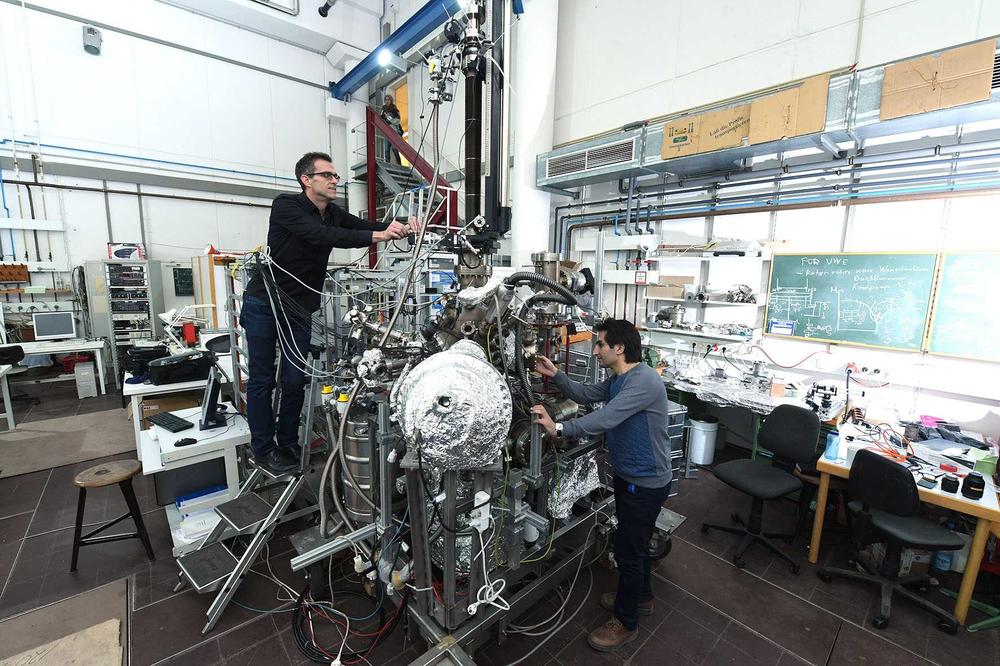Lab Tours and CRC Presentation
A trick from modern physics allows us to "see" individual atoms: a scanning tunnelling microscope feels the atoms by means of a fine metal tip and converts this information into images. We can also move individual atoms in a targeted manner and use them to build nanostructures that open up completely new technical applications.
Location: Room 0.3.16
Spintronics refers to a new form of information processing based not on the charge but on the magnetic moment ("spin") of electrons.
The Collaborative Research Center/TRR 227 "Ultrafast Spin Dynamics" investigates the physical basis for this on the shortest time scales, as we will show you in demonstration experiments.
Location: seminar room E2 (1.1.53)
Collaborative Research Centres, or CRC, are long-term university-based research institutions established for up to 12 years in which researchers work together within a multidisciplinary research programme.
Find out how hard disks store information, what new concepts there are for magnetic data storage and what role atomically thin magnetic layers play in this. Observe how these can be explored in ultra-high vacuum using laser beams and how their magnetic properties can be improved.
Location: Room 1.2.30


